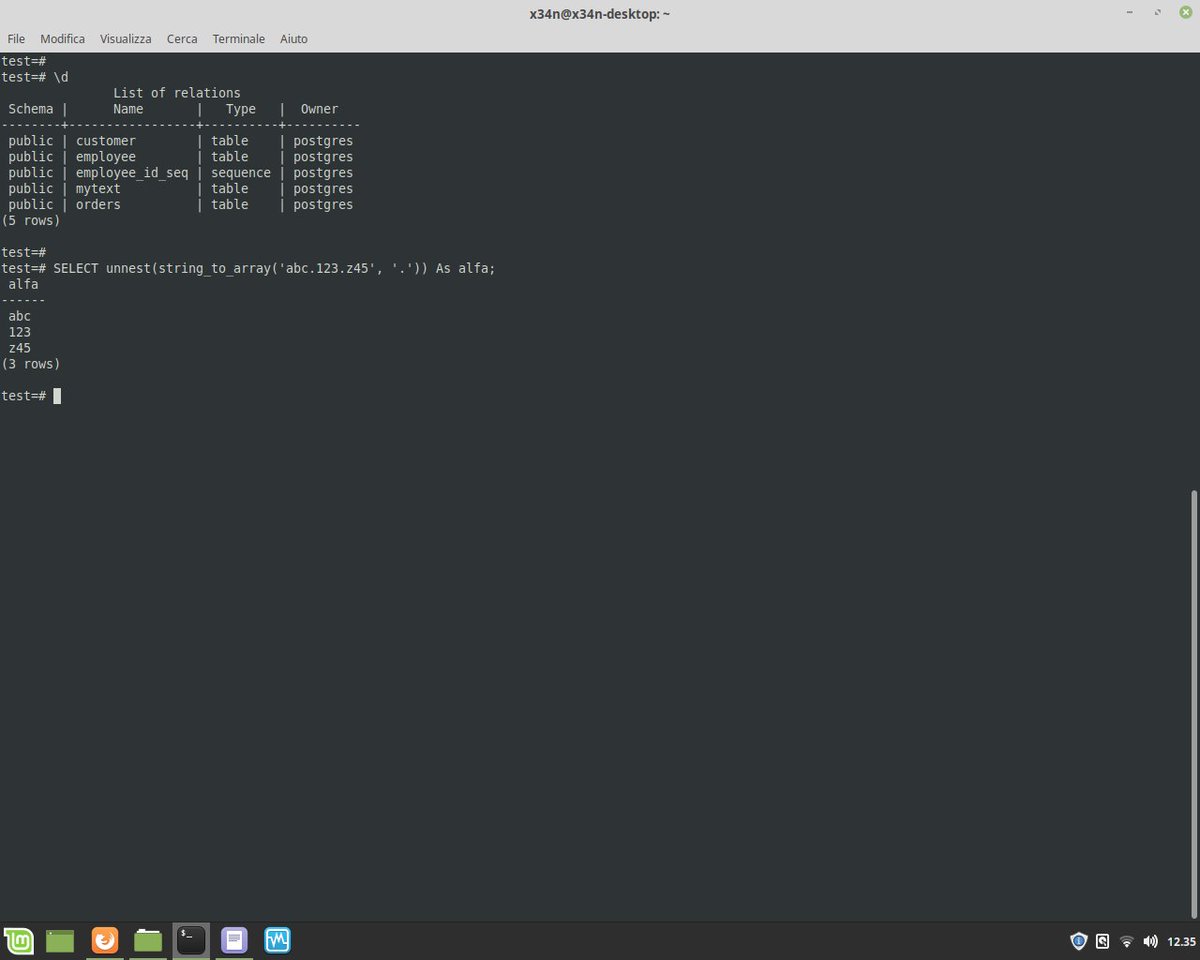Unnest Postgresql Array | Expand an array to a set of rows. First, the array has been converted into rows using the unnest function; This function is used to expand an array to a set of rows. With pivoted_array as( select unnest(array1.1,1.2) ) select row_number() over() as element_index, unnest as element_value from pivoted_array. Then, these rows will be sorted into ascending order by using the. This function is used to expand an array to a set of rows. Expand an array to a set of rows. Unnest(string_to_array(v.genre_list, ', ')) as genre. First, the array has been converted into rows using the unnest function; The arrays can be empty. Arrays in postgresql are very similar to arrays in most programming languages. Where id is an integer and values is an integer array. Postgresql postgresql unnest() function with example : We can update the individual elements of an array or entire with the unnest() function provided by postgresql to expand an array to a list of rows. I need to unnest this list. Array plays an important role in postgresql. In my database there is a table which looks like. We can split these into separate rows. Unnest(string_to_array(v.genre_list, ', ')) as genre. With pivoted_array as( select unnest(array1.1,1.2) ) select row_number() over() as element_index, unnest as element_value from pivoted_array. It is extremely helpful when working with arrays. Table 9.45 shows the operators available for array types. Create or replace function unnest(anyarray). Postgresql provides the unnest() function that can be used for this. Every corresponding postgresql data type comes with a relevant array type. Distinct comes back into the picture. Create or replace function unnest(anyarray). First, the array has been converted into rows using the unnest function; Postgresql postgresql unnest() function with example : Postgresql 9.4 introduced with ordinality for generating a sequence number for each element which are produced by unnest(). We can split these into separate rows. In my database there is a table which looks like. Where id is an integer and values is an integer array. Unnest(string_to_array(v.genre_list, ', ')) as genre. Arrays in postgresql are very similar to arrays in most programming languages. Using arrays in column definitions and contains @> operator. When we are talking about the string array, internal element. Every corresponding postgresql data type comes with a relevant array type. Array plays an important role in postgresql. The arrays can be empty. It is extremely helpful when working with arrays. Postgresql provides the unnest() function that can be used for this. Postgresql postgresql unnest() function with example : Distinct comes back into the picture. In my database there is a table which looks like. Unnest(string_to_array(v.genre_list, ', ')) as genre. We can split these into separate rows. Distinct comes back into the picture. Then, these rows will be sorted into ascending order by using the. With pivoted_array as( select unnest(array1.1,1.2) ) select row_number() over() as element_index, unnest as element_value from pivoted_array. It is extremely helpful when working with arrays. Postgresql 8.4 includes a function for expanding any array of any dimension into a set of elements. Array plays an important role in postgresql. First, the array has been converted into rows using the unnest function; Postgresql 9.4 introduced with ordinality for generating a sequence number for each element which are produced by unnest(). Every corresponding postgresql data type comes with a relevant array type. Apart from that, arrays are very relevant in postgresql. Using arrays in column definitions and contains @> operator. Expand an array to a set of rows.


I need to unnest this list unnest postgres. Unnest(string_to_array(v.genre_list, ', ')) as genre.
Unnest Postgresql Array: I need to unnest this list.
0 Tanggapan:
Post a Comment